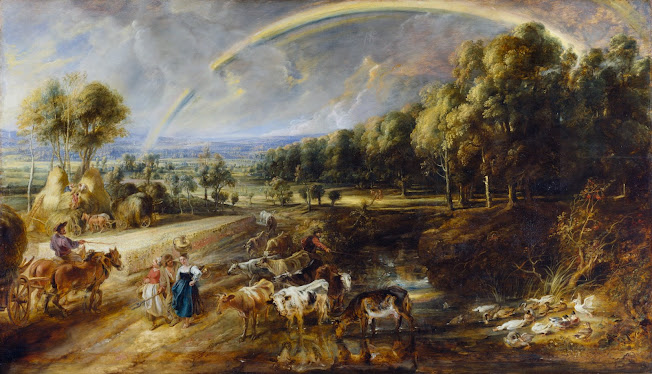Preferences and perspectives - Romantic Era

I will compare the differences between the Hudson River School artists and artists of the Pre-raphealite. By examining their landscape paintings I will point out my aesthetic preferences between the two while still acknowledging their inspirations. The first paintings are both from Hudson River School artists. The top painting is Into Yosemite Valley by William Keith, it was painted in 1895 on one of his many trips to Yosemite. The painting is a fantastic example of how the Hudson River School students would pick grand scenes and make them appear even grander. The small people in the image making their way up the hill add a sense of scale to the mountains in the background. This depth from the atmospheric perspective and composition allows the viewer to spend more time in the painting, almost relaxing in the awe of the landscape. The second painting by Thomas Moran titled 'Dusk Wings' was painted in 1860. This painting depicts the grandeur of a sunset as it cas...
